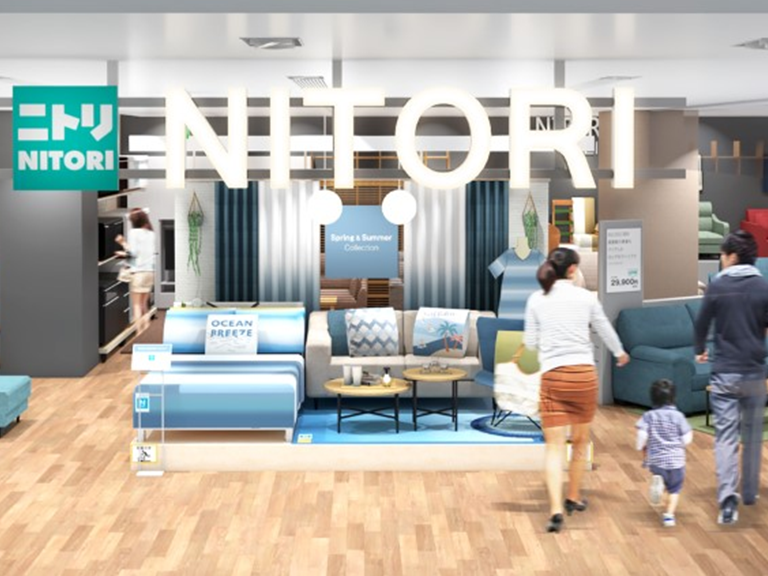“Those who know when to fight and when not to fight will be victorious; those who understand the use of both large and small forces and take actions accordingly will be victorious.”
The founder of Nitori, Akio Nitori, through acquiring market-leading experiences, established his unique strategic positioning in the Japanese furniture industry, beginning to build his competitive advantage centered around cost leadership.
Before delving into Nitori, let us first introduce the founder and key figure of the company: Akio Nitori. For a significant period, Akio Nitori struggled, both academically and professionally. In 1967, he began to manage a small furniture store on the brink of bankruptcy, eventually transforming it over the decades into the renowned ‘NITORI Corporation’ in Japan. Reflecting on his life experiences, Akio Nitori believes that by changing one’s mindset, one can change their lives.

Akio Nitori
The seed of change was planted during a business trip to the United States at the end of 1972. Facing the crisis of bankruptcy in his second furniture store, Akio Nitori, thinking that it might be an opportunity, participated in a seminar organized for approximately 40 individuals in the furniture industry on the West Coast of the United States. This trip shook Akio Nitori to the core.
Firstly, the affordability of American furniture stands out, with prices being only one-third of those in Japan. Secondly, there’s a vast array of choices in terms of variety, styles, and colors, whereas Japan lags far behind in this aspect. During his visit to model homes, not only were American furniture pieces displayed but also combined with home decor items like curtains, demonstrating a holistic approach to interior design. Additionally, in terms of lighting, the US flexibly used indirect lighting, creating a balance between light and shadow conducive to relaxation. Furthermore, American furniture excels in functional segmentation, as represented by the TPOS framework(Time, Place, Occasion, Style), which thoroughly considers the timing, location, occasion, and lifestyle of its users.
Upon his return from the US, Akio Nitori clarified the company’s vision, shifting from a previous focus solely on “increasing sales, maximizing profits, and boosting year-on-year growth” to “providing a vibrant home environment.” He became more determined in adopting a “customer-first” approach, prioritizing the perspectives of buyers and users alike. Inspired by the American market, he established affordability, coordination, and functional segmentation as the three guiding principles for Nitori’s products.

Amidst Japan’s economic downturn at the time, pursuing affordability was the most practical choice for Nitori. Achieving this required leveraging economies of scale. Even when Nitori had only seven stores, Akio Nitori set a goal of expanding to 100 stores and diligently worked towards it. Store expansion allowed Nitori to lower costs through mass production and bulk procurement. Additionally, Nitori autonomously planned and developed new products that disrupted traditional pricing structures, selling them through its channels. Once a furniture style gained market acceptance, the company committed to large-scale procurement and production efforts to drive prices down.
Nitori’s products have always emphasized coordination in design, with store displays changing with the seasons. By concentrating color options, Nitori can seamlessly transition styles with the changing seasons. Typically, when people decorate interiors, they first determine the color palette for the entire residence. Based on this, they decide the ratio of solid-colored items to patterned ones. In the past, Japanese curtains were all patterned, leading to conflicts in coordination and aesthetic appeal. However, even a simple blanket from Nitori is designed with consideration for coordination with cushions. Approximately half of the products displayed in stores are sold year-round, with the other half being seasonal items.

Taking cues from the TPOS principles learned in the US, Nitori innovates and leads trends in product development, considering functional segmentation in its designs. For instance, in Japan’s furniture industry where cabinets dominate, Nitori pioneers categories more aligned with Western lifestyles, such as beds and sofas. Moreover, Nitori designs cabinets that remain upright even during earthquakes (unlike traditional ones that tend to topple over and spill contents when shaken) and cabinets with tough surface coatings (resistant even to scratches from a 10-yen coin).

 Nitori’s 40 years of growth against the market trend
Nitori’s 40 years of growth against the market trend







